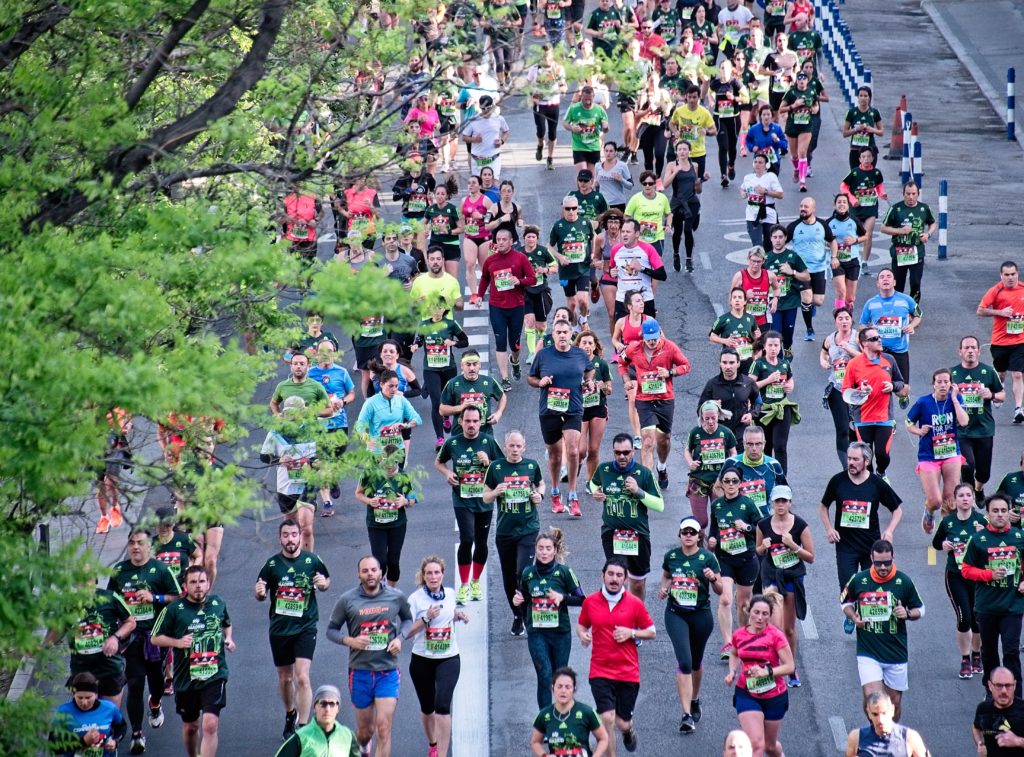Get ready, Chicago Marathon runners—June is the beginning of the official training schedule for October’s big race. During this training phase, there is a lot to take into consideration besides just making sure your miles are completed. Today, we’ll dive in to a personal marathon story from one of my clients. Then, I’ll provide you with a marathon checklist to help reach your marathon goals safely.
Carney’s Story
Carney, a former patient of mine, ran the Chicago Marathon three times. While training for his second marathon, he made multiple mistakes that affected his ability to complete the marathon safely. This also put the time he had trained for in jeopardy. And with the excessive heat, Carney began cramping so bad at mile 17 that he had to spend a couple of hours in the medical tent. He finished the race in more than six hours, and walked across the finish line.
There are common mistakes that marathon runners make while training.
Here are some of Carney’s pitfalls:
- Nutrition. He did not dial in his nutrition during his training
- Travel. He flew into town from overseas just two days before the race
- Dehydration. He went into the race dehydrated from the recent travel
- New shoes. He didn’t finalize his shoe choice until the week before
- Recent injury. He still struggled with some weakness from his latest injury of Achilles tendonopathy
- Pacing. He struggled to keep an easy pace during his training runs, as he often ran at the same fast pace
Carney’s Proper Race Preparation
Carney was determined not to repeat the same mistakes when he ran his third marathon the following year.
Here’s how Carney fought against common marathon pitfalls.
Carney’s training wins included:
- Shoe choice. He chose his race shoes early in training
- Strength-training. He worked with a coach to build strength
- Customized plans. His coach outlined a training plan designed for Carney to help with pacing
- Nutrition. He worked with a nutritionist to figure out his exact fluid, nutrition, and electrolyte needs on race day and practiced them during his training runs
- Physical therapy. He consistently came into PT after suffering a calf tear early in the year, and he diligently did his PT homework
After putting his new plans in place, Carney was set up for success for his third marathon. And wouldn’t you know it—he did it! He completed the marathon in 4:39 with some mild cramping in miles 21 to 22, but he was able to run through it. Congratulations, Carney!
Building Your Marathon Checklist
Carney avoided the problems he encountered while training for his second marathon by having a plan and following through. When you’re training, a marathon checklist is all too essential. Besides following a training plan that logs your miles up to that long 20-miler, there are many other components you need to be aware of.
The following checklist focuses on all the things you can control before and during race day to promote having your best experience running a marathon!
Your Marathon Checklist
- Wear proper clothing for training and race day
- Train in your race day shoes
- Understand your hydration and nutrition needs while running longer than an hour, and incorporate regularly during your training runs
- Know your bathroom needs, so you don’t get caught out on a run with no bathroom available
- Train in different weather conditions
- Run easy when it says to run easy
- Listen to your body, and adjust your plan as needed; it’s okay to have a rest day
- Maintain/improve your mobility, balance, and strength through targeted exercises
- Get bodywork regularly, whether it be massage, physical therapy, or acupuncture
- Cross-train as needed
- Take care of any lingering injuries, pain, or irritation as soon as they happen
- See your health team regularly and as needed from this list: physical therapist, massage therapist, chiropractor, acupuncturist, and nutritionist
- Treat each training run with a purpose
- Work with a running coach for accountability, safety, and an objective ear
- Determine how many rest days you need, whether every week or a different cadence
- Know your injury threshold when increasing your long run distance; for example, I could increase my long run distance two weeks in a row, and then needed to cut back the third week
- Test any tech (watch, music) you might be using on race day, and don’t try something new day-of
- Have a race day pace plan
- Don’t go out of the gate too fast
- Have fun!!
This checklist helped me throughout my marathon story. As you can see, there are so many integrated components to consider when completing a successful marathon. Plus, the journey takes a ton of mental preparation and strength. You need commitment, discipline, patience, perseverance, sacrifice, dedication, and lots of training, both mental and physical. It takes support and understanding from family and friends. And it takes a community of runners and coaching from experts.
Good luck with your marathon, and drop us a note about your marathon experience or any questions you may have. We’re cheering you on!







Leave a Reply